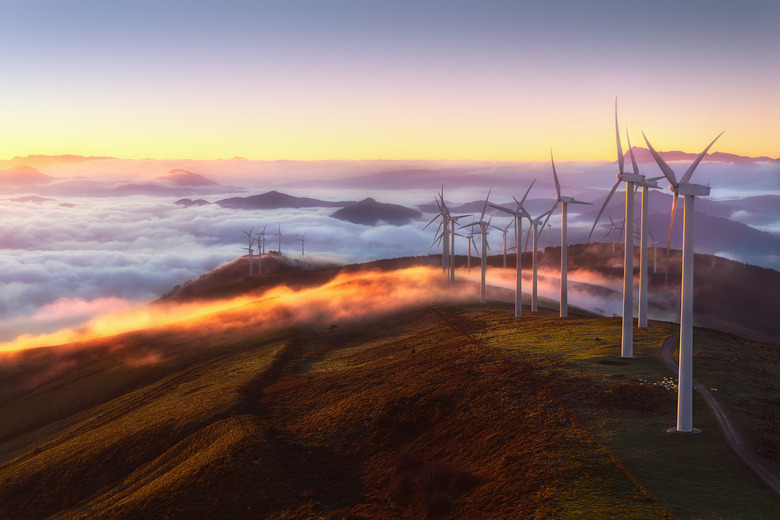The Different Parts Of A Generator
A generator is a machine used to convert mechanical energy into electricity. Powered by a fuel source such as oil, gasoline, wind or moving water, generators create electrical current through electromagnetic induction. Generators widely serve as backup power sources for factories and hospitals, where the facility can set them up to work immediately if the main power goes out. Commonly used by residential homes and small businesses, commercial generators are usually the size of a large barbecue grill and allow for easy storage.
TL;DR (Too Long; Didn't Read)
Generators convert a fuel source into usable energy that consumers can use as a backup power source. Generators contain an engine, a fuel system, an alternator and a voltage regulator, as well as cooling, exhaust and lubrication systems.
The Engine
The Engine
Every machine contains an engine, which is generally the portion of the machine that converts the fuel source into usable energy and allows it to move or perform its mechanical function. For this reason, engines are sometimes called the machine's prime mover. In a generator, the engine uses its fuel source (gasoline, diesel, natural gas, propane, bio-diesel, water, sewage gas or hydrogen) to create mechanical energy the generator will convert into electricity. Each generator engine's design aims to create a maximum supply of electrical current by running on a specific fuel or other power source. Some engines commonly used in the design of generators include reciprocating engines, steam engines, turbine engines and microturbines.
Fuel System
Fuel System
Generators running on fuel have a system that stores and pumps the appropriate fuel to the engine. The tank stores enough fuel to power a generator for an equivalent number of hours. The fuel pipe connects the tank to the engine, and the return pipe connects the engine to the fuel tank for return of fuel. The fuel pump moves the fuel from the tank through fuel pipe and to the engine. A fuel filter filters any debris from the fuel before delivery to the engine. The fuel injector atomizes the fuel and injects it directly into the combustion chamber of the engine.
Alternator and Voltage Regulator
Alternator and Voltage Regulator
The alternator converts mechanical energy produced by the engine into electrical current. The alternator comprises the stator and the rotor (or armature). The stator is a stationary part containing a set of coils that conduct electricity. The rotor moves to create a constantly rotating electromagnetic field around the stator. The alternator generates electrical voltage. The generator must regulate the voltage to produce a constant current suitable for practical use.
Cooling, Exhaust and Lubricating Systems
Cooling, Exhaust and Lubricating Systems
The temperature of generator components requires regulation to prevent overheating during use. Generators can use a fan, coolant or both to control the temperature of the generator at work. The generator will also produce exhaust as the combustion chamber converts fuel. Exhaust systems dispel the harmful gases emitted by the generator during use. Generators comprise many moving parts, each of which requires oiling to ensure smooth functioning. The lubricating system keeps the generator well oiled.
Cite This Article
MLA
Jennifer, Kristin. "The Different Parts Of A Generator" sciencing.com, https://www.sciencing.com/different-parts-generator-7361525/. 22 May 2018.
APA
Jennifer, Kristin. (2018, May 22). The Different Parts Of A Generator. sciencing.com. Retrieved from https://www.sciencing.com/different-parts-generator-7361525/
Chicago
Jennifer, Kristin. The Different Parts Of A Generator last modified March 24, 2022. https://www.sciencing.com/different-parts-generator-7361525/
